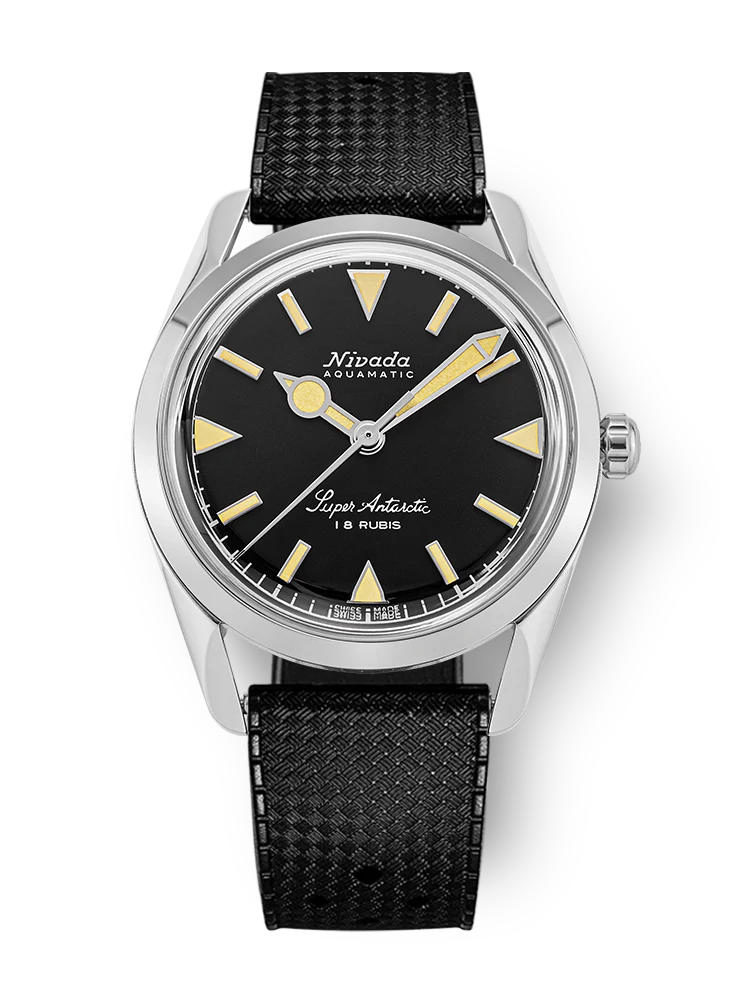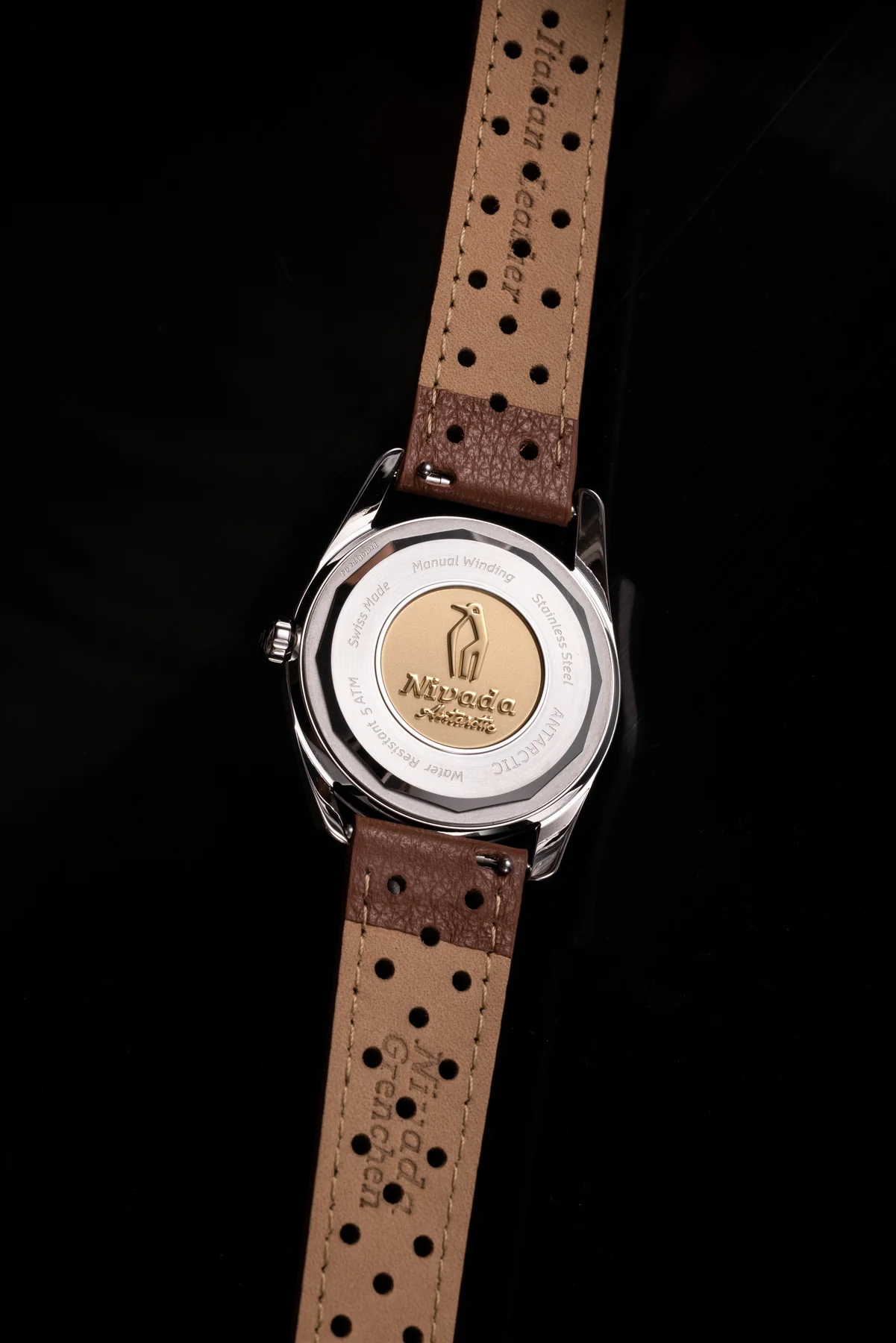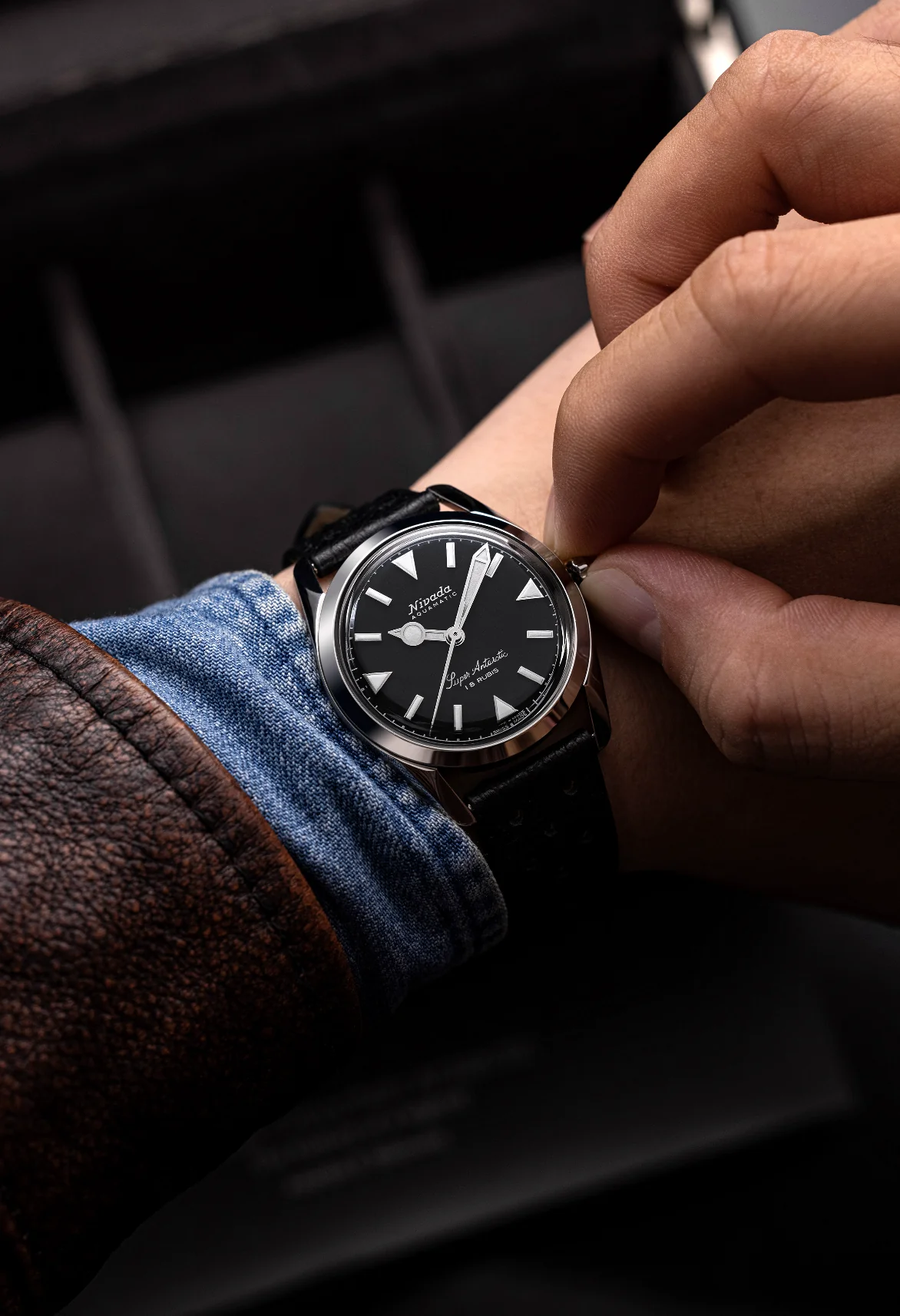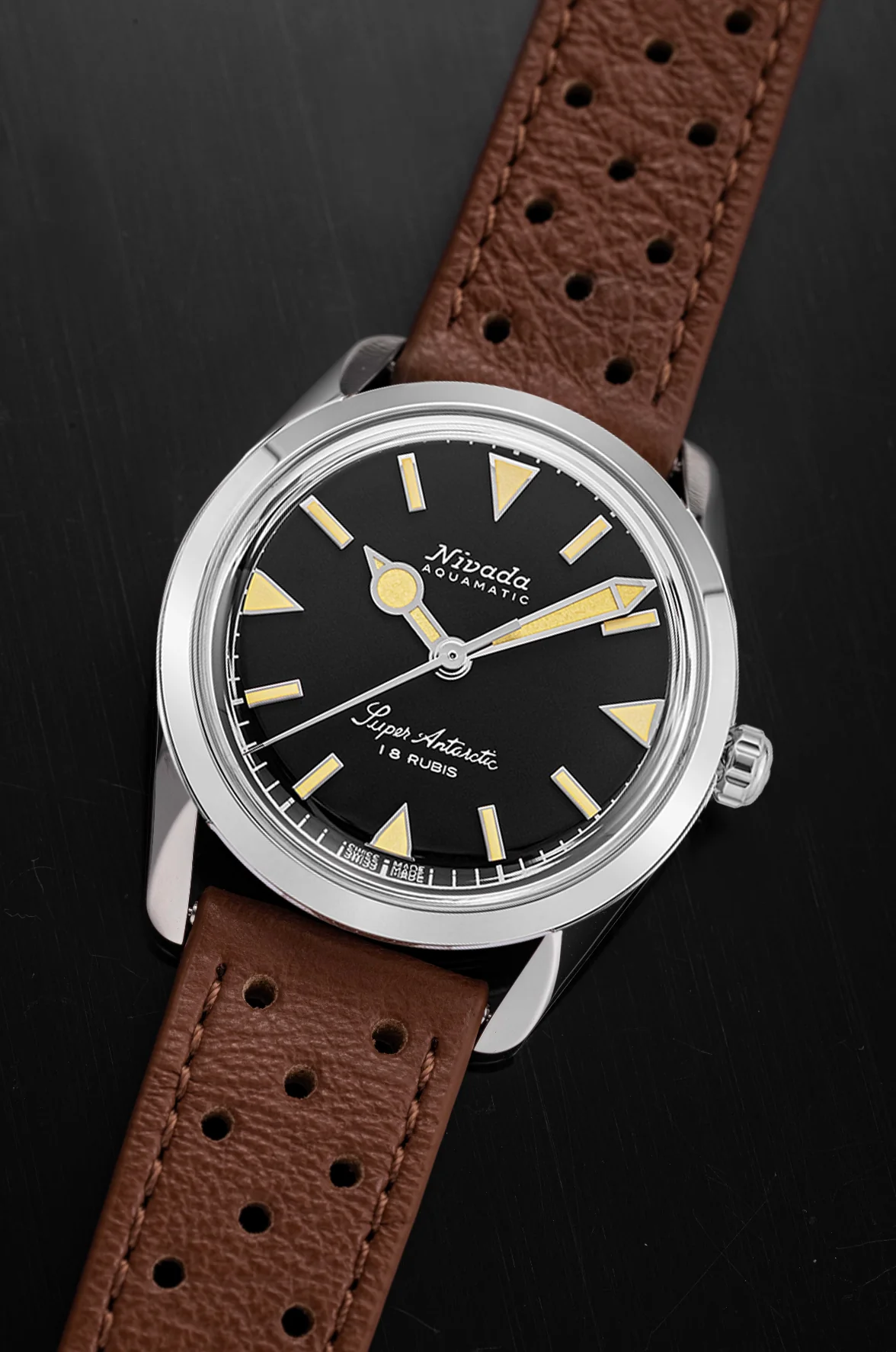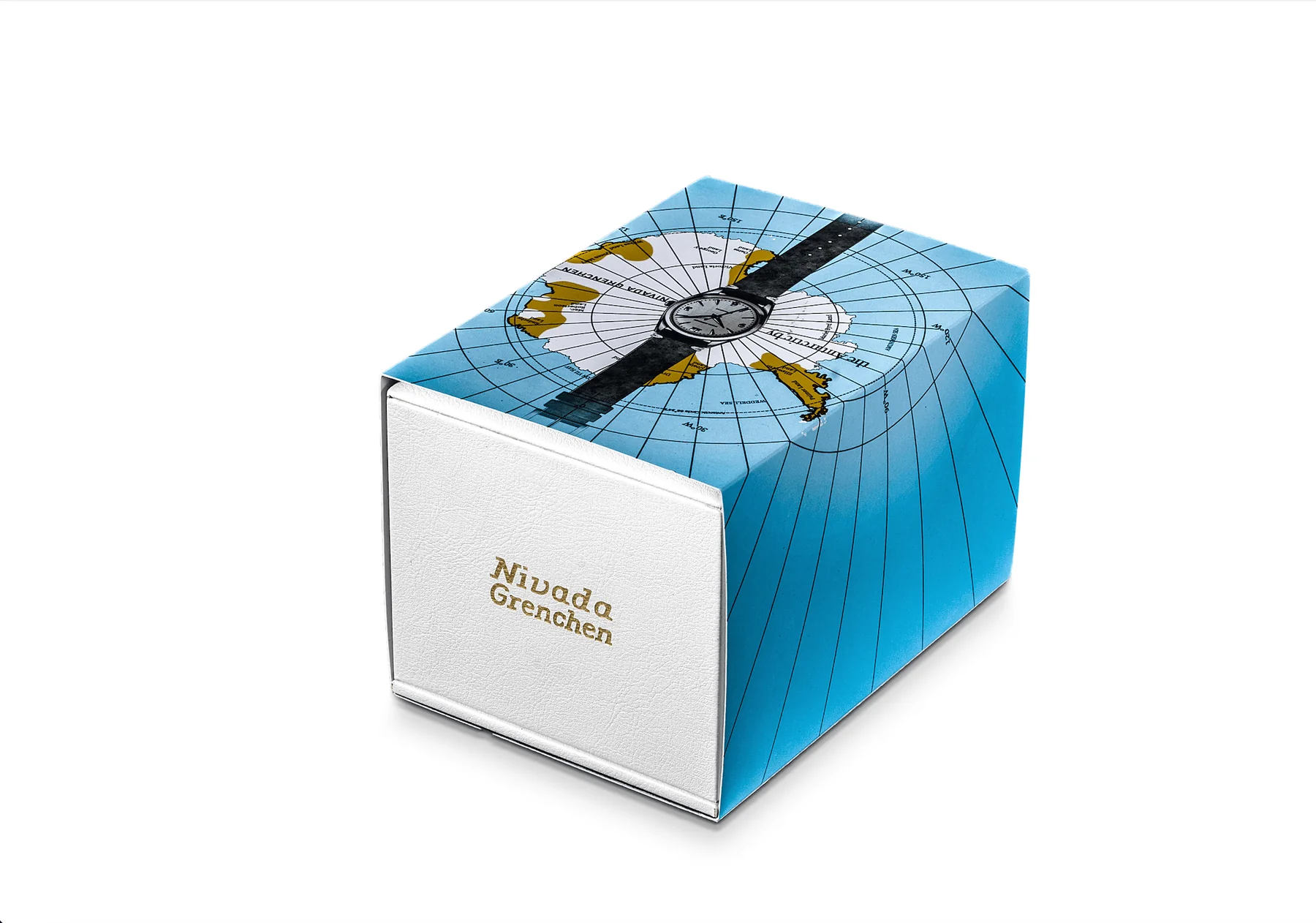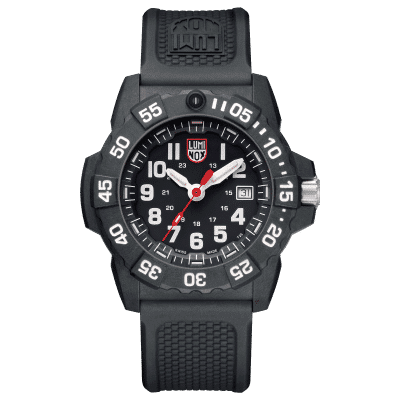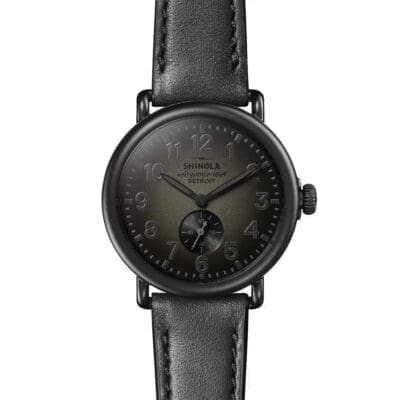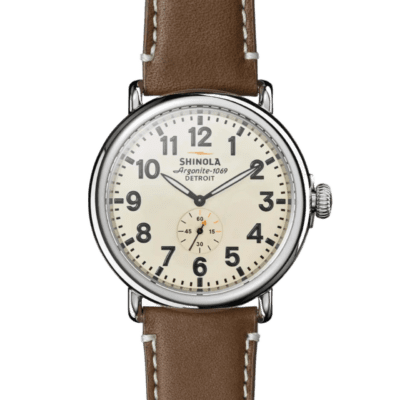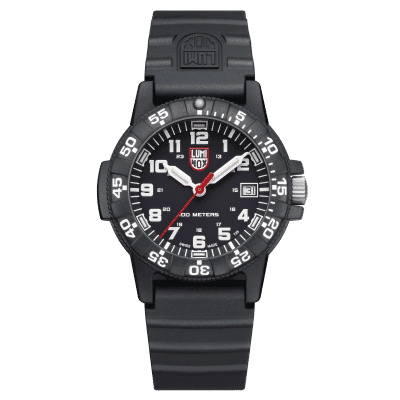Nivada Grenchen Super Antarctic 35mm, No Date
$1,225.00 – $1,475.00
Nivada Grenchen Super Antarctic 35mm
Description
In the mid-1950s, the United States initiated a series of missions to Antarctica. Dubbed Operation Deep Freeze, the project conducted from 1955 to 1956 aimed to establish the first permanent base in one of Earth’s most severe and icy landscapes. At the time, esteemed polar explorer Admiral Richard E. Byrd was President Eisenhower’s fitting choice to oversee Operation Deep Freeze I. On his wrist, the ANTARCTIC — the same watch that is now being reissued — robust, shock-resistant, and antimagnetic. And crafted to endure the harshest conditions.
In November 2021 Nivada Grenchen launched a modern re-issue of the Super Antarctic. Here’s an interesting story about it. When one of the fans posted a vintage Super Antarctic on Instagram, Guillaume shared the post as a story on Nivada Grenchen’s official Instagram account and the fans went wild. Requests started pouring in to re-issue the model. Nivada adhered to the demand of the fans and soon the Super Antarctic was launched. It’s black dial is simple but striking. Beneath the Nivada name is the word Aquamatic, (waterproof + automatic) . Above 6 is the signature Super Antarctic font with 25 RUBIS printed below. It’s most striking aesthetic feature is the sword and lolly-pop, minute and hour hands. It’s case back is decorated with their signature golden medallion.
This Super Antarctic reissue also started on Instagram, following a post of one of Nivada Grenchen’s followers who had the great idea to share his vintage timepiece with us. We shared it in the stories and got so many messages that we knew it was our mission to make it again with the same original spirit and guts. But with modern standards (Sapphire Glass) and Manual winding movement (Landeron 21) offering a 5 ATM water resistance.
Operation Deep Freeze is a codename for a series of United States missions to Antarctica, beginning with “Operation Deep Freeze I” in 1955-56, followed by “Operation Deep Freeze II”, “Operation Deep Freeze III”, etc. The name was proposed by Admiral Richard Bryde. The main incentive behind Deep Freeze 1 was the International Geophysical Year (IGY), 1957-58. IYG was a collective effort among 40 nations to carry out various scientific studies from the North Pole to the South Pole and at points in between. The United States along with New Zealand, France, UK, Japan, Norway, Chile, Argentina, and the U.S.S.R. agreed to go to the south pole, which was the least explored and remote area on Earth. Their main goal was to gain and study the knowledge of Antarctic hydrography and weather systems, glacial movements, and marine life. U.S. Navy was charged with supporting the U.S. scientists for their portion of the IGY studies. Rear Admiral Richard E. Byrd, a veteran of four previous Antarctic Expeditions, was appointed as officer in charge of the expedition. In 1955, Task Force 43, commanded by Rear Admiral George J. Dufek, was formed, which provided logistical support for the expedition. Operation Deep Freeze I, that transpired from November 1955 to April 1956, set up a permanent research station and paved the way for more extensive research in later operations.
Nivada Grenchen Super Antarctic 35mm, No Date Details:
Landeron calibre 21 hand-wound movement
18 jewels
36 hour power reserve
Flat Matt Solid Black with applied index markers
7403C SuperLuminova on hands and markers
316L stainless steel case
press down crown
screw in caseback
double domed sapphire crystal with anti-reflective coating
water resistant to 50 metres
case diameter: 35mm
case thickness: 10.1mm
lug width: 18mm
Additional information
| Strap | Flat Link, Brown Racing, Black Racing, Brown Leather, Black Leather, Brown Leather White Stitching, Black Leather White Stitching, Rubber Tropic |
|---|---|
| Lume | White, Beige |

